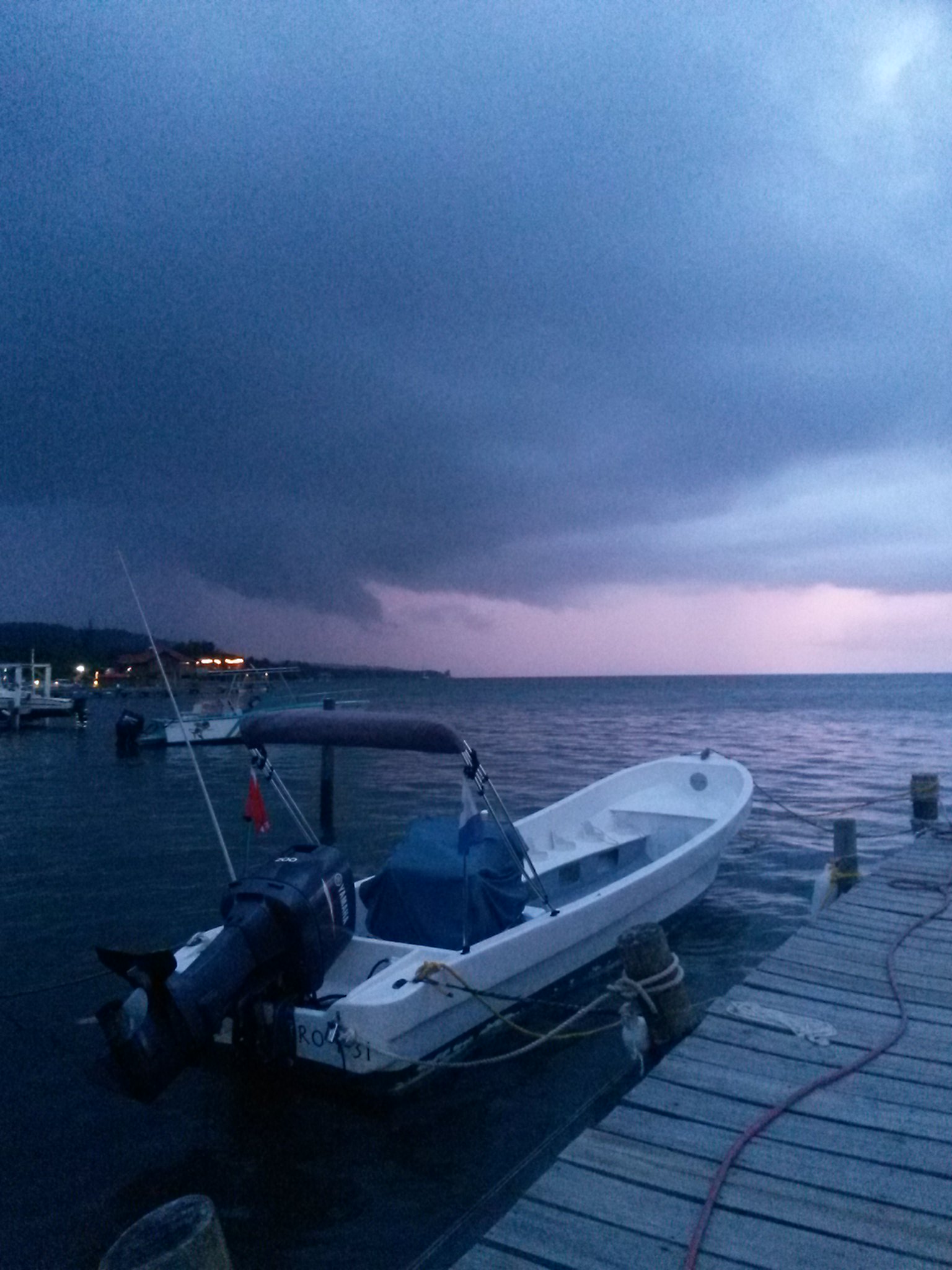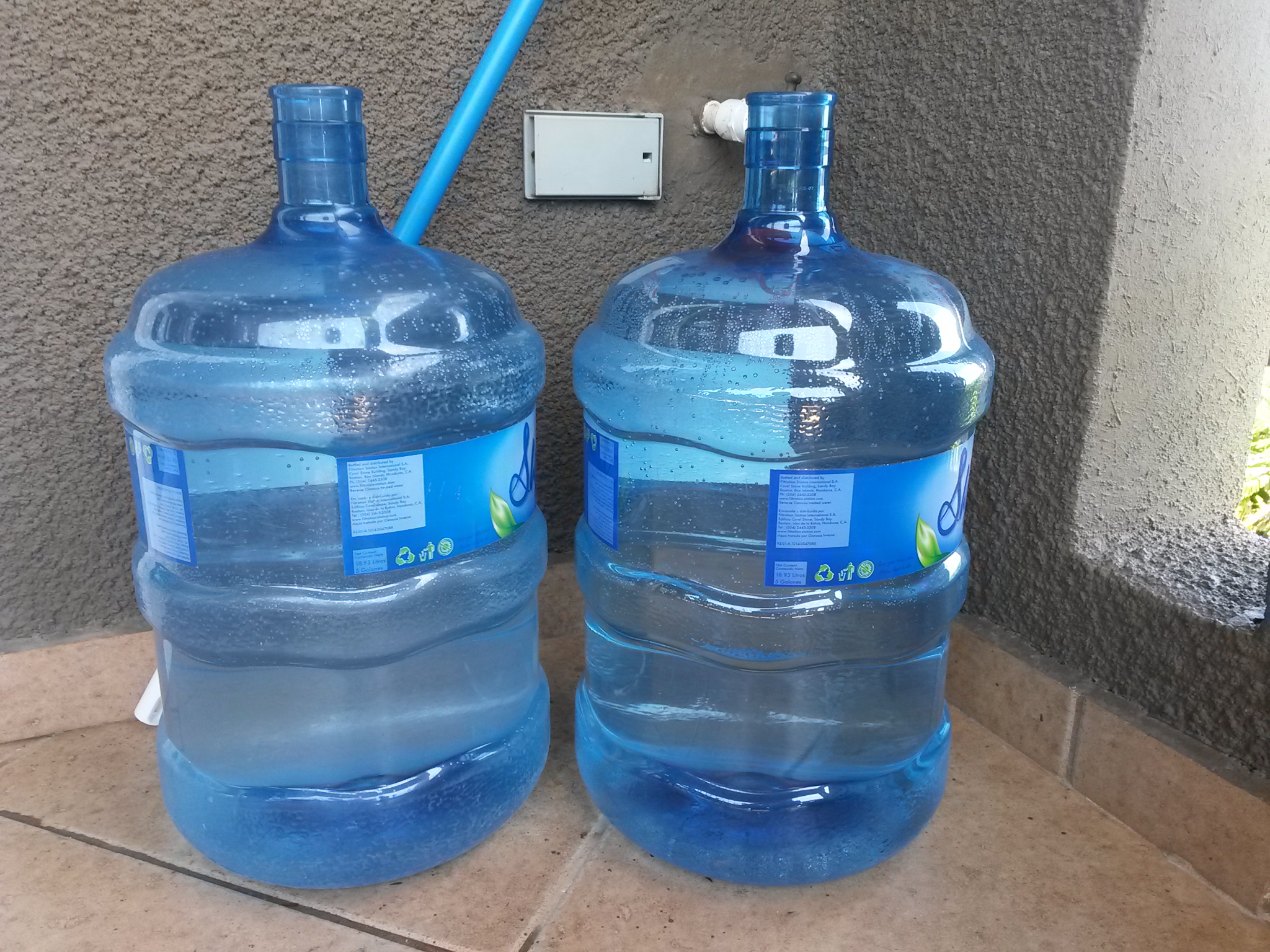Well, Hurricane Earl came and went, and fortunately its trajectory changed at the last minute and Roatan was able to avoid a lot of the predicted damages. The island still suffered, but not to the extent that we all thought, and for that we are grateful. Other parts of Central American were not so lucky, and we wish them well in their continuing reconstruction efforts.
We have been through a variety of storms since we came to Roatan three years ago, but since Roatan is below the hurricane belt, this is the first time in several years where there has been even the possibility of a hurricane reaching Roatan's shores. We had seen this one coming for a week and the forecast had gotten worse in the three days before Earl's arrival, so we had ample time to prepare. And while the worst of the storm missed us and we didn't have to implement all the preparations we made, it was a good test run to see how we would face next rainy season and to see if any changes need to be made.
Storm preparedness is imperative to surviving a storm (in style). After three years of storm power outages, we finally bit and bought a generator, which was immensely helpful. We will, however, be omitting ideas like that, as we're just focusing on affordable and easy ways to prepare for a storm. Let's have at it!
Tip 1. Research and make a checklist
Before we started preparing, we made a checklist of what we needed to get through this storm based on what we felt we were missing in the last storms. We had a general idea of what we would need, but we wanted to make sure that there wasn't anything significant that we missed. We went online to look up different preparations lists, and figured out what we felt was useful and feasible.
When you make a checklist, make sure to also write down any emergency numbers you may need, and make a mental (or physical) plan for an emergencies that may crop up, like water leaks or power outages. It's better to be too prepared than to be caught unawares.
Tip 2. Stock up on non-perishables
It's important to hit the grocery store before a storm hits (but please don't hoard so that other people are out of food). While the storm itself may only last a day or two, there will always be longer lasting effects from the storm. Roads may get wiped out or power lines may go down, so make sure you are prepared with non-perishable items to get you through. Canned goods last forever (and can be used after a storm as well) and dry items like rice and pasta are good as well. If you have a gas stove, make sure that you have a lighter so that you can still cook while power is out. Try to focus on meals that can be made quickly in one pot or two, rather than things that require seven hours and eight courses.
Tip 3. Prepare food for the first day
Well, this seems contradictory after telling you to stock up on non-perishables, no? Try to prepare something, at least for the first day of the storm, so that you don't have to worry about cooking. We figured that power would go out, so I slow-cooked some food the night before, then transferred it to a Thermos cooker on the day of so that it would stay warm throughout the day. When the storm hit and power did go out, at least we had a warm meal to have. Food is a physical and mental experience, and getting to eat barbecue pork while the storm raged outside helped us feel more comfortable.
Tip 4. Store some water
When power goes, so does water, and it sucks to be out of power and not have enough water to be able to do normal things like flush the toilet. If you have a bathtub, it's a good idea to fill it up before a storm so that you can take the water as necessary. We don't have a bathtub, so we filled up three 5-gallon empty water jugs and kept them outside, filling up small containers and bringing the water inside when necessary. Even though water was out, we could still use the bathroom and rinse off dishes, which made riding out the storm much easier.
Make sure to also have some filtered water to drink. Even if you live somewhere where you can drink the tap water, storm surges can bring in all sorts of bacteria-laden water, and stagnant water can turn nasty as well. Keep several gallons of filtered water to be on the safe side. Getting stomach sickness with no power and no water is no fun, so it's better to be safe than sorry.
Tip 5. Let there be light
So you're all prepped with a homemade comfort meal and plenty of water to ride out the storm. And then the power goes out and you're sitting there in the dark. This is no bueno. Make sure you have plenty of light on hand for both safety and comfort.
A lot of people like to stock up on candles, which are the most affordable option, but candles tend to emit a lot of heat, which can make things stuffy when you're stuck in a room, can't open the windows because of the wind and rain and therefore have no air circulation. There are some nice solar powered options out there that charge quickly and are energy efficient, and the designs are getting sleeker every year.
Solar powered, inflatable and waterproof, good for all sorts of activities! https://mpowerd.com/
For an even more efficient light source, consider a headlamp. You have full use of your hands, whether you're cutting vegetables or trying to stop a leak, and headlamps are small and useful enough that you'll definitely find uses for them in daily life as well.
Tip 6. Buy phone data
When power goes down, wifi goes with it. Make sure you have enough data on your phone that you don't have to rely on external wifi. Social media is actually great for keeping people updated during emergencies, and is a good way for valuable information to be spread, especially if the information infrastructure isn't amazing where you are.
Tip 7. Top up your batteries
Before the storm hits, make sure all your electronic items are fully charged. This goes for phones, computers and even batteries for torches or radios. Using data on your phone can deplete the batteries quickly, so it wouldn't hurt to have some portable chargers as emergency backups as well. Portable battery chargers and solar powered battered chargers are super affordable these days with a lot space efficient designs, and it wouldn't hurt to have extra portable chargers for your every day life, either (I'm looking at you, Pokemon-Goers)!
Tip 8. Finish your household chores
I don't know if this is actually a thing, but it was for me so I'm going to include it. When we knew that a storm/hurricane would hit, I did all the laundry and all the dishes and made sure to clean the kitchen. Was it necessary? No. But I was also preparing for the possibility of no power and water for a few days, and nothing is more disheartening than having nothing to eat on or nothing to wear because it's all dirty. Making sure that everything was clean and usable before the storm hit was more for peace of mind, but I went into the storm feeling more prepared.
Bonus tip. Practice patience
Nothing tests your patience like no power and no water. Believe me, I know. But when the power is out all day, I try to keep my impatience in check and remember that as much as it sucks for me as a consumer, it really sucks for the guys working at the power plant and the linemen working on the power lines, trying to keep everything from falling apart. They have an enormously tough job, and a pretty thankless one considering we're all chomping at the bit to get them when our power becomes inconsistent. So when your area struggles to get back on its feet or isn't as efficient as it could be, practice patience and be kind.
So there you have it, some useful ways to prepare for a storm. Whatever storm comes your way, may you weather it well.














